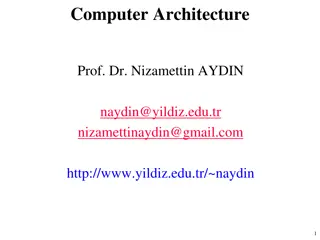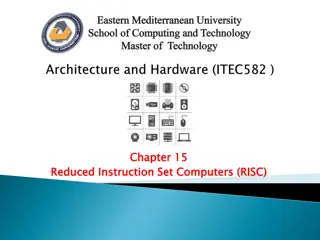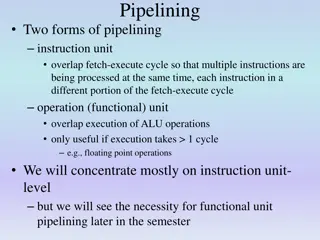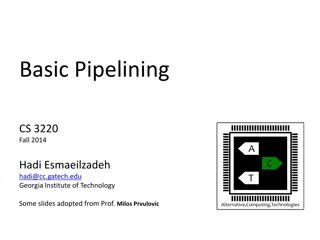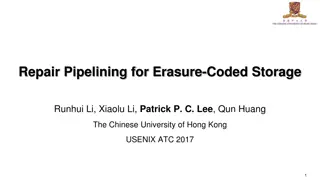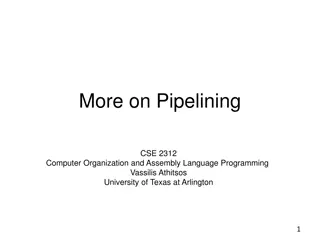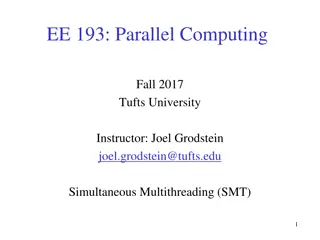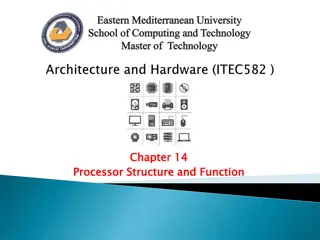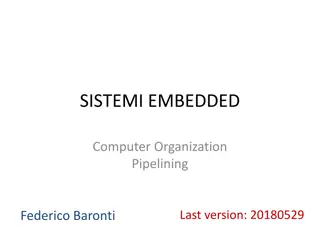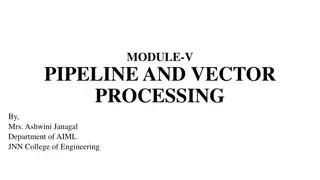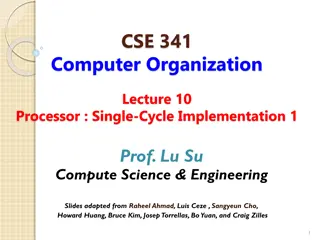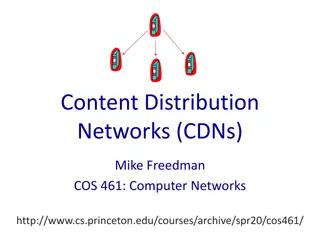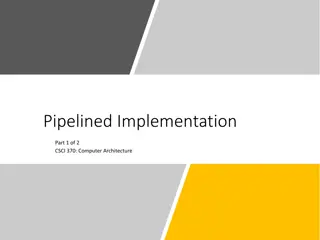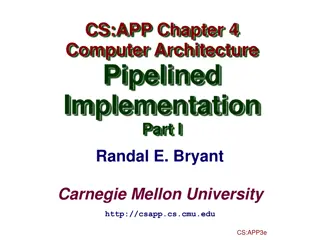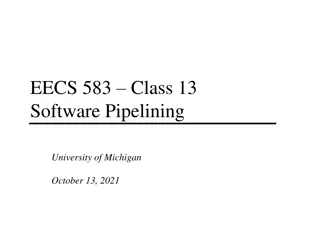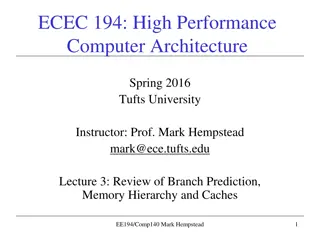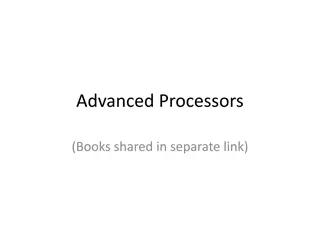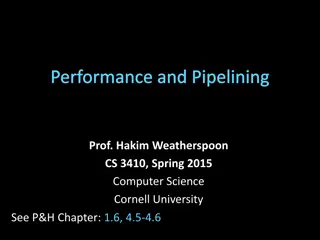
Efficient Pipelining in Laundry Operations
Enhance your understanding of pipelining through a practical laundry case study. Discover how parallel processing can drastically reduce laundry time compared to non-pipelined methods, saving you valuable hours of effort. Learn about the concept of pipelining in computer processors and see its application in everyday tasks like laundry management.
Download Presentation

Please find below an Image/Link to download the presentation.
The content on the website is provided AS IS for your information and personal use only. It may not be sold, licensed, or shared on other websites without obtaining consent from the author. If you encounter any issues during the download, it is possible that the publisher has removed the file from their server.
You are allowed to download the files provided on this website for personal or commercial use, subject to the condition that they are used lawfully. All files are the property of their respective owners.
The content on the website is provided AS IS for your information and personal use only. It may not be sold, licensed, or shared on other websites without obtaining consent from the author.
E N D
Presentation Transcript
Topic: Pipelining
A Pipelining is a series of stages, where some work is done at each stage in parallel. The stages are connected one to the next to form a pipe - instructions enter at one end, progress through the stages, and exit at the other end.
Pipelining Case: Laundry 4 loads of laundry that need to washed, dried, and folded. 30 minutes to wash, 40 min. to dry, and 20 min. to fold. We have 1 washer, 1 dryer, and 1 folding station. What s the most efficient way to get the 4 loads of laundry done?
Non Pipelined Laundry Takes a total of 6 hours; nothing is done in parallel
Pipelined Laundry Using this method, the laundry would be done at 9:30.
Definition: Pipelining is an speed up technique where multiple instructions are overlapped in execution on a processor.
Pipelining: Processors Computers, like laundry, typically perform the exact same steps for every instruction: Fetch an instruction from memory Decode the instruction Execute the instruction Read memory to get input Write the result back to memory
InstructionPipeline Instruction execution process lends itself naturally to pipelining overlap the subtasks of instruction fetch, decode and execute Instruction pipeline has six operations, Fetch instruction (FI) Decode instruction (DI) Calculate operands (CO) Fetch operands (FO) Execute instructions (EI) Write result (WR) Overlap these operations CS211 8
Instructions Fetch The IF stage is responsible for obtaining the requested instruction from memory. The instruction and the program counter are stored in the register as temporary storage. CS211 9
Decode Instruction The DI stage is responsible for decoding the instruction and sending out the various control lines to the other parts of the processor. CS211 10
Calculate Operands The CO stage is where any calculations are performed. The main component in this stage is the ALU. The ALU is made up of arithmetic, logic and capabilities. CS211 11
Fetch Operands and Execute Instruction The FO and EI stages are responsible for storing and loading values to and from memory. They also responsible for input and output from the processor respectively. CS211 12
Write Operands The WO stage is responsible for writing the result of a calculation, memory access or input into the register file. CS211 13
Six Stage Instruction Pipeline
Timing Diagram for Instruction Pipeline Operation
6 Pipeline Performance: Clock & Timing Si Si+1 m d Clock cycle of the pipeline : Latch delay : d = max { m } +d Pipeline frequency : f f = 1 / CS211 16
7 Pipeline Performance: Speedup & Efficiency k-stage pipeline processes n tasks in k + (n-1)clock cycles: k cycles for the first task and n-1cycles for the remaining n-1 tasks Total time to process n tasks Tk = [ k + (n-1)] For the non-pipelined processor T1 = n k Speedup factor n k n k T1 Tk = S = = k + (n-1) [ k + (n-1)] k CS211 17
Advantages Pipelining makes efficient use of resources. Quicker time of execution of large number of instructions The parallelism is invisible to the programmer.
Can Pipelining Get Us Into Trouble? Yes: Pipeline Hazards structural hazards: attempt to use the same resource bytwo different instructions at the sametime data hazards: attempt to use data before it isready - An instruction s source operand(s) are produced by a prior instruction still in the pipeline control hazards: attempt to make a decision about program control flow before the condition has been evaluated andthe new PC target address calculated - branch instructions Can always resolve hazards by waiting pipeline control must detect the hazard and take action to resolve hazards CSE431 L06 Basic MIPS Pipelining.19 Irwin, PSU,2005

